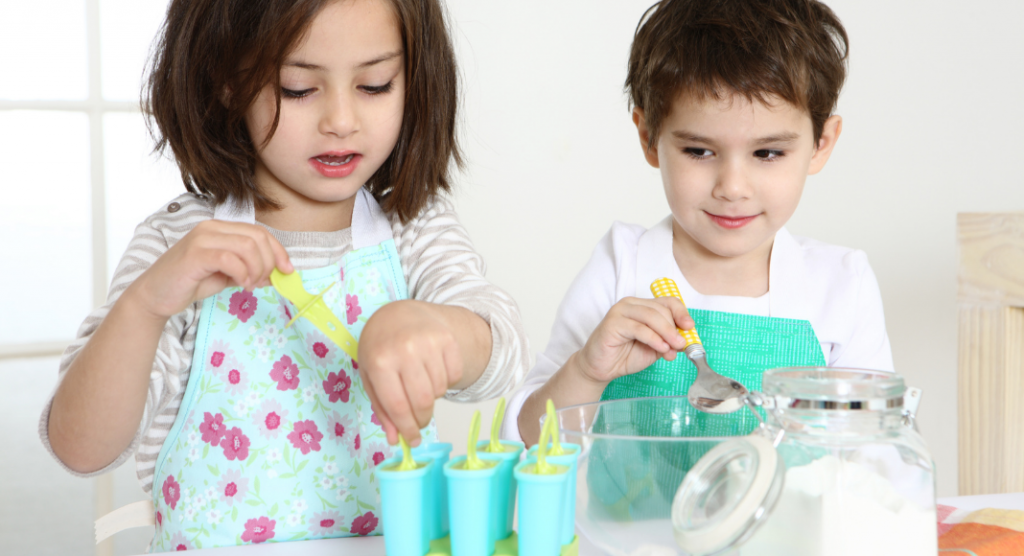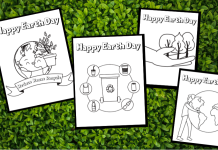 Think back to the best ice cream you’ve ever had. Whether in a frozen tub, from a shop, or at a party. What made it so special? Was it the creaminess, the softness, the flavor, the toppings? Or was it simply the surroundings and circumstances in which you enjoyed this frozen treat?
Think back to the best ice cream you’ve ever had. Whether in a frozen tub, from a shop, or at a party. What made it so special? Was it the creaminess, the softness, the flavor, the toppings? Or was it simply the surroundings and circumstances in which you enjoyed this frozen treat?
With a little understanding of the magical chemistry that creates ice cream, you can now perfect all of these elements! No Ph.D. in chemistry or culinary arts necessary. Just a quick five minutes to read through this post, and you’ll have a family-friendly summer activity to enjoy and be on your way to a delicious masterpiece!
Super Simple Ice Cream Science
The Basics
Ice cream is an emulsion. Emulsion is a combination of two liquids that shouldn’t usually mix well together (like oil and water). In the case of ice cream, it is primarily liquid fat and a water-sugar solution. As this churns, air bubbles are mixed in and are supported by the forming ice crystals and fat globules. The emulsion freezes and solidifies, but the ratio of these ingredients determines the balance of firmness-softness, intensity of the flavor, and overall quality.
*Fun fact* – ice cream contains ALL states of matter at once! Ice and fat (solid), sugar solution (liquid), and air bubbles (gas).
Getting the Perfect Consistency
Do you prefer fluffier ice cream? Or creamier? To get your dream texture, let’s take a closer look at the four components of ice cream!
1. Ice Crystals
Ice crystals come from the water (usually from the milk or cream) in the mixture as it freezes, and gives ice cream solidity and firmness. The SIZE of these crystals also plays a huge role. Giant crystals will give your ice cream a freezer-burn taste. Maybe you like this, but typically, smaller ice crystals = smoother higher quality ice cream.
2. Air
You don’t typically get a recipe card that calls for “air” in the ingredients, but it contributes considerably to the final texture. Air is introduced during the stirring or churning. More air = fluffier, while less air = denser/creamier.
3. Fat
Believe it or not, fat has lots of important responsibilities in ice cream! It traps air bubbles and holds together the final structure, it thickens and flavors, and it adds creaminess. Both the water/ice crystals and fat come from the dairy (milk or cream). A higher fat-dairy (cream instead of milk) will increase the creaminess and flavor. Yes, even other added flavors will taste…well, flavor-ier with higher fat. This is because fat holds on to these flavors. I’m partial to flavor and creaminess myself, but too much fat can be a bad thing. Too much will create a blobby texture and a sickening-sweet flavor.
4. Sugar Solution
This is the liquid portion of ice cream in which all other components are suspended. And as you guessed, it gives ice cream its sweet flavor. Some of these sugars come from dairy, but many times, additional sugar is added.
 Let’s Make Some Ice Cream!
Let’s Make Some Ice Cream!
There are three main steps* in ice cream production:
1. Preparing the liquid mixture
This is the most important step! If you have a mixture with low-quality ingredients or an undesirable ratio of the fundamental components, the final product will be low-quality and undesirable.
2. Churning/mixing
This process is actually made up of two steps:
A. Homogenization: Fat droplets are dispersed and broken up, and air is whipped into the mixture.
B. Freezing: With a churner, your mixture is in a cylindrical vessel in the middle, with ice and rock salt on the outside. The purpose of rock salt is to lower the water’s freezing temperature. The vessel, which is typically metal, conducts temperature well, so the inner ice cream mixture slowly freezes by contact with the outer ice/cold metal vessel.
3. Hardening
When the ice cream comes out of the churner, it’s only about half frozen. I personally LOVE to eat it this way. The melty, soft ice cream is perfect to me right out of the churn. But most people prefer to stick the soft ice cream into the freezer until the desired consistency is achieved.
*More steps may be added depending on the process you choose, especially if using emulsifiers/stabilizers.
Ice cream activity for kids
Ice cream in a bag!
This is a very popular activity for kids. It’s an activity that makes making ice cream super simple for children.
Inner Bag Ingredients:
• 1 cup Half and half (or heavy cream)
• 1.5 tsp Vanilla
• 1 tbsp. Sugar
Outer Bag Ingredients:
• Ice
• ¼ cup Salt (table salt is fine, but coarser salt is better)
Mix the inner ingredients in a Ziploc bag. Seal firmly, letting excess air out. Place outer bag ingredients in a Ziploc (about halfway full with ice), then place the inner bag in this Ziploc. Close and SHAKE, SHAKE, SHAKE. Then freeze. Once the desired consistency is achieved, carefully remove the small back and rinse before opening.
NOTE: Add another layer of bag for good measure, especially if your kid is an aggressive shaker. Mittens are great to wear to avoid cold hands.
Quick Tips
• Faster freezing = smaller ice crystals = smoother ice cream
• Use high-quality ingredients
• Fresh fruit in the mixture will typically need extra sugar to translate the taste well
• Keep it clean – wash your hands and tools well before use
Ice Cream Recipe:
Nana’s Famous Peach Ice Cream
This recipe comes from my grandmother, and it is always a hit. It’s fun to make, and no matter how much I prep, it’s never enough for any party.
Ingredients/Equipment
• 1 can evaporated milk
• 1 can sweetened, condensed milk
• 1 package peach Jello
• 3-4 peaches
• 1 cup sugar
• Churn
• Ice
• Rock salt
Directions
1. Cook Jello as directed (DO NOT CHILL)
2. De-pit and cube peaches (skin on or off, as preferred)
3. Mix Jello liquid and canned milks
4. Place mixture in churn metal vessel
5. Fill in alternating layers of ice-rock salt outside the mixture canister
6. Churn until desired consistency
7. Freeze batch to harden
Interested in growing your knowledge of ice cream further? Check out dreamscoops.com to learn more about emulsifiers, stabilizers, and more complicated ice cream recipes.













